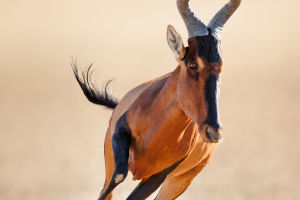Camels are fascinating animals that have adapted remarkably well to life in the desert. They are known for their distinctive humps, long necks, and ability to survive in extremely harsh conditions. There are two types of camels: the single-humped camel and the double-humped camel.
They have a height of about 2 meters and can weigh up to 450 kg. Camels have a lifespan of 35-40 years and were first domesticated over 4,000 years ago. Sadly, wild camels are now almost extinct.
In 1978, there were approximately 16.99 million camels in the world, but by 2010 this number had risen to around 18 million. Of these, 16 million were dromedary camels and 2 million were Bactrian camels.
Africa has the largest population of camels, with about 71.75% of the world's total number. In countries on the southeastern border of the Sahara Desert in North Africa, camels are of significant economic importance.
Camels have been used as a main means of transportation in desert and semi-desert areas for centuries. Their long legs, large and brisk strides, and strong endurance make them ideal for traversing long distances in the desert. Although they are not particularly fast runners, they are well-suited to their environment.
One of the most remarkable features of camels is their ability to go for long periods without water. Their nostrils are specially adapted to retain moisture in the air, which allows them to conserve water.
They also have a body temperature that is about 6 degrees Celsius higher than most mammals, which helps to reduce the evaporation of water from their bodies. Additionally, they can barely sweat in extreme heat to prevent water loss.
Camels have other adaptations that help them survive in the desert as well. Their large feet allow them to distribute their weight and prevent them from sinking into deep sand. The soles of their feet also have a special pad that reduces contact between their feet and the hot sand, which helps to avoid burns.
Camels are not only useful for transportation but also provide important resources for humans. Their milk can be consumed directly or used to make cheese, yogurt, and other dairy products.
Although modern transportation methods have diminished the importance of camels for transportation, they still play a vital role in many desert regions. They are an important part of the culture and way of life for people in these areas and provide a valuable resource for survival.
Camels are truly amazing animals that have adapted to life in the desert in ways that are truly remarkable.
Their ability to survive in harsh environments without water for long periods, as well as their contributions to the economy and culture of desert regions, make them a valuable asset to humans. Despite the challenges they face, camels continue to thrive in many parts of the world and will likely continue to do so for years to come.


